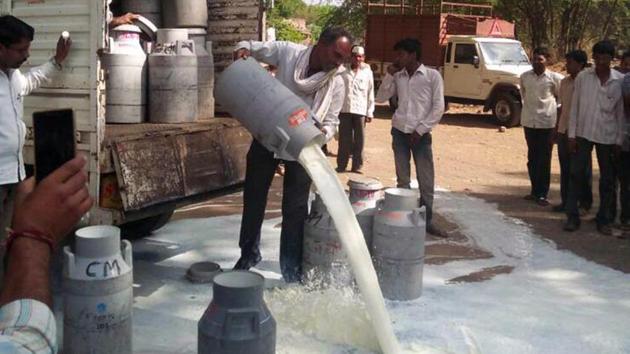Opinion| Farmer protests: Rewrite the rules to stop this cycle of agrarian distress
Agrarian crises keep repeating because successive governments have been treating agriculture as a source of votes and not an engine of growth
The farm protests in Madhya Pradesh that left five people dead this week is symbolic of a wider agrarian distress engulfing India. Farmers are demanding loan waivers and remunerative prices for all crops, many of them encouraged by Uttar Pradesh’s decision to write off loans given to small farmers. The governments of Maharashtra and Punjab, where the protests are spreading, have rightly resisted because loan waivers only offer relief that is usually exhausted in two farming seasons.

The cardinal malaise lies in successive governments treating agriculture as a source of votes and not an engine of growth. That kept the rural-urban wage gap wide at 45%, almost four times that of China, and shrunk the share of farming in GDP to under 14%, although more than half of India’s 1.25 billion people still depend on it.
To be sure, India is reforming parts of its economy. But not farming. If farmers are to escape poverty, farming needs to become more like manufacturing: Teched up operations, free as far as possible from imponderables, churning out quality produce that fetch the right price.
For this, things need to change. The old, labour-intensive methods must give way to technology for efficiency and higher yield; Pricing and subsidy mechanism must be overhauled; and, most importantly, India must look at fewer people farming.
For far too long, farming has been at the mercy of nature, especially the June-September monsoon rain. The use of technology is patchy, and only one-tenth of every rupee the government spends on rural areas goes to improving productivity — which is why farmers in India grow 46% less rice an acre than their Chinese counterparts.
Our farm subsidy policy encourages the production of only low-value staples, such as rice and wheat, and the output of fruits and vegetables — that more Indians are eating and farmers producing — is not covered by the government’s minimum support price. Much of the farm distress sweeping India now stemmed from a glut of potatoes, onion and tomatoes.
Worse, the monopoly of traders over local agricultural markets is perpetuated by law, which bars farmers from selling directly to consumers. This kills any chance of farmers getting a fair price, lining the pockets of commission agents instead.
In the past, a single season of dry spell was enough to send the economy into recession. Now failed monsoons trigger localised distress. That’s an improvement. Still, far too many farm households remain too poor. And unless the rural economy is unshackled from a time and policy warp, our dream of double-digit economic growth will remain just that: A dream.



